Number seven,
Make Something Awesome
To impress potential partners, some species make elaborate structures.
Structures are often built by male birds and evaluated by females.
An example is the weavers, where males build one or more nests out of woven grasses. If females approve of the nest they move in and lay eggs.
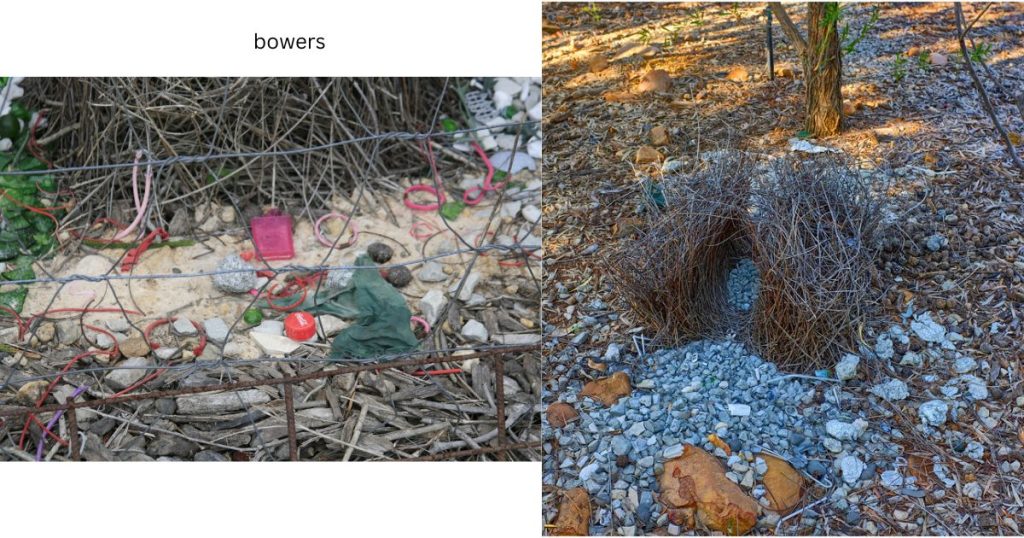
Bowerbird males do not assist with nest building, incubating eggs, or raising young. The female is totally on her own for that. But the males build structures called bowers for courtship. There are several different styles of bower. Some have decorative objects, some have food, some have walls and paths. The structure has some functional uses, but it also tells the female something about the male. We don’t know what exactly, but it could be his mental ability or his ability to collect and arrange materials in the bower. The lesson here is to do interesting things.
Number six,
Dress to Impress
Looks aren’t everything, but many bird species have some way of showing off beautiful ornaments. A fancy look can help catch someone’s eye.
Ornaments on a bird also communicate something, It might show their good nutrition, or their ability to escape predators.
Let’s first talk about sensory bias. In some species, there is a preference for some type of color or shape. If a bird develops a way to associate itself with that color or shape, it has an advantage in courtship. There was this great experiment where researchers went to a group of Least Auklets with some decoys. Some of the decoys had normal feathers, and others had feathery head crests. The auklets tried to court the feathery crested decoys TEN TIMES more often than the normal ones. So if an auklet ever develops a new crest style it will be wildly popular.

Birds of paradise have an extensive array of display feathers. Each one could be tied to a sensory bias, or to some other form of consistent choice among females. Also, red marks on a bird can have a meaning. The red pigments come from plants, not made by the bird itself. So being very red means the bird has had access to a lot of food. Plus, those same red pigments are used up in regulating the immune system, so a very red bird is also doing well by not being sick. This is called an honest signal because it’s so expensive for the male to make a red patch that he can’t fake it. There are lots of birds with red patches.
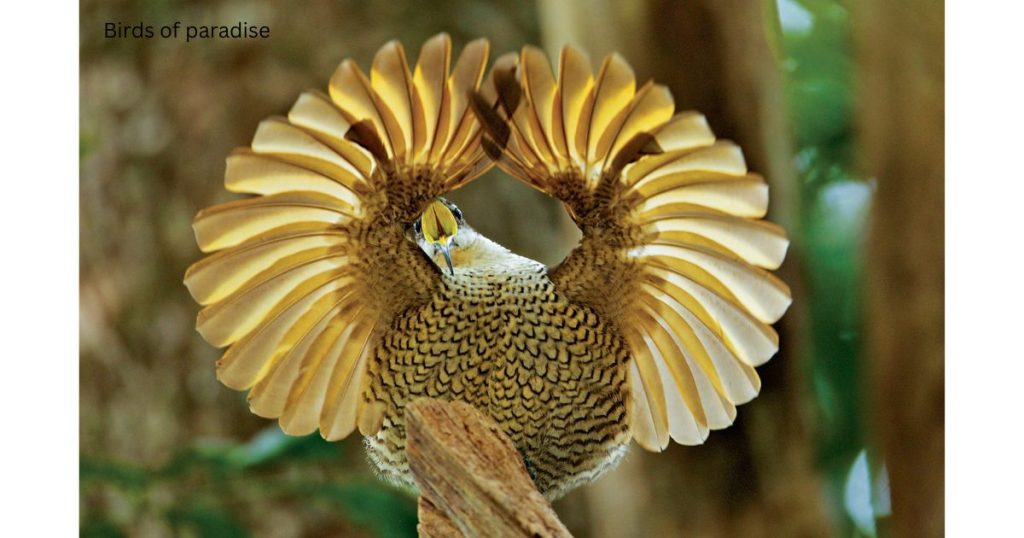
The giant, beautiful feathers of male pheasants and peacocks are possibly present due to female choice, but another possible explanation is the handicap principle. It says that male birds have giant, basically useless feathers. If they survive despite this disadvantage, it shows females that their other traits must be really good.
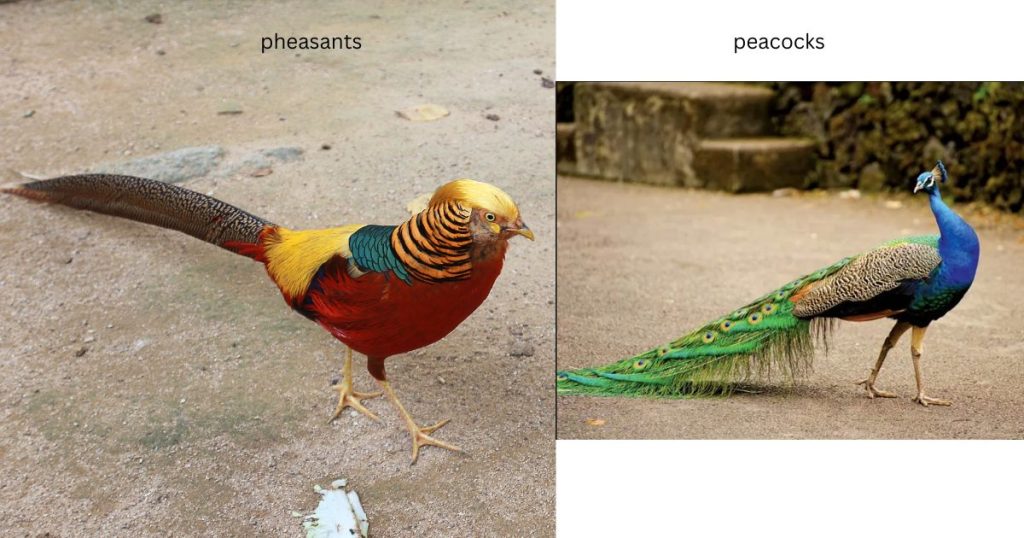
You would have to ask a bird to get the full story, because we can’t ask them what they think. But this is our best guess of what is happening.
Number five,
Be in the Right Place
There are places that birds gather for courtship. It’s more likely they’ll find a partner there.
Leks are interesting courtship displays in a few bird species. In a lek, a group of males cluster together and start to do loud, energetic displays. Females can then wander through and choose a male based on whatever criteria they have. In lekking species the male is not involved in nest building or chick-rearing, so he provides no benefit to the female that way. Just for fun, let’s cover the major theories as to why leks exist.
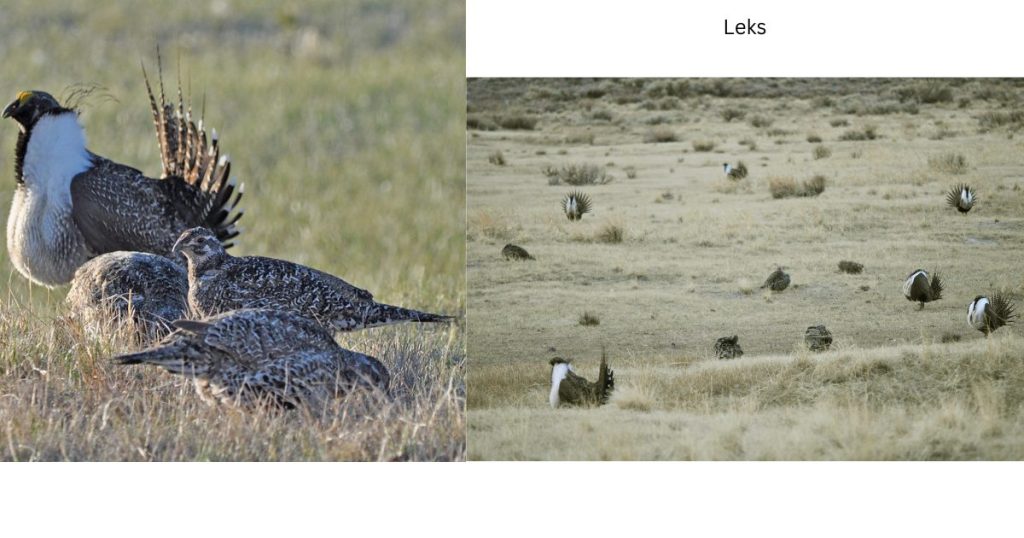
The predator protection hypothesis says that if you’re doing a visible, loud display it helps to have lots of other birds looking out for predators. So this clustering is just a way to be safe.
The hotshot hypothesis says that there are some really, really attractive males called hotshots, and a courtship display starts when they show up. Females show up to see the hotshot. Other males start displaying in hopes of distracting females before they get to the attractive one. The hotspot models, says that males gather to display in places that females reside, like a tree full of fruit.
Kin selection says that all the males in the group are in some degree related, so their family benefits no matter which male is successful. They all share some genes, so their genes get passed on even via a relative.
And my preferred theory as to why leks exist is a simple one, that it reduces the energy needed by females to find and evaluate males. It will be interesting to see if some, all, or none of these are supported by experiments in the future!
Number four,
Show Off Your Dance Moves
So many birds strut their stuff that we have the phrase “shake your tail feathers”. They dance if they can, but dance anyway if they can’t.
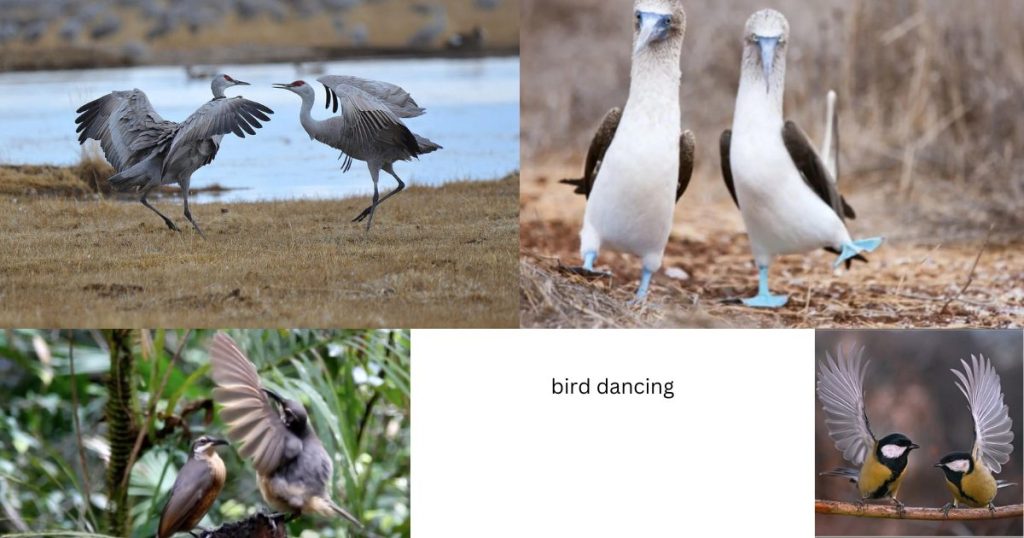
Elaborate displays increase along with the importance of female preference in courtship success, Or another way to say it is that the more choosy females are, the more males amp up their displays. So let’s look at a few examples of dances and see how fancy those displays can get.
Number three,
A Song Never Hurts
This is one of the reasons bird singing exists. Interested birds shout it out loud. Or if they can’t, play some music.
Bird singing is used to mark territory, but also to attract potential partners. This could be achieved with two calls. One in which the bird calls “Mine” and another where it calls “Look at me”. Like this Chiming Wedgebill is clearly doing the “Look at me” call. But many birds have more complex songs than that. An example is the sedge warbler, which has up to 100 different sounds it makes. Males cycle through their sounds, and females are more likely to choose a male that knows more different sounds. The call has become an audio ornament, basically, which shows the male has some good quality. Lyrebirds are another example of this effect, and their ability to mimic sounds is much more amazing. Listen to this lyrebird mimic a bunch of sounds. Again, the birds that make the most different sounds are the ones that are most successful in courtship. The Palm Cockatoo has a pleasing call compared to other cockatoos, but they have an additional signal. They play music! A palm cockatoo grabs a branch or other hard material and starts hitting a dead tree with it. It makes this loud sound that carries far. This could be a courtship display, or a territorial marker.
To listen and know more about bird songs click here.
Number two,
Gifts
You might try presents, like the Greater Roadrunner, who has a homemade meal. Yum!
In most species the female has a bigger energy investment in producing offspring. Eggs are expensive in terms of nutrients, and it takes a lot of work to find food for the chicks. So a male offering some nutrients is a way to offset the expense. Even in a species like the Greater Roadrunner, where the parents raise chicks together, the male still might offer some food. This might just be a nutrient gift, or it might show how good he is at finding food.
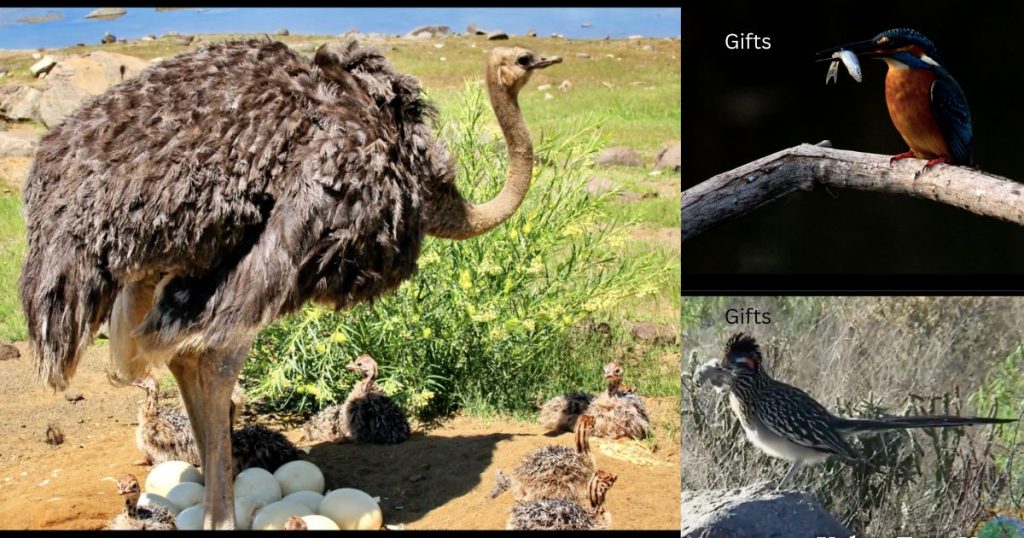
Number one,
Synchronized Display
There’s no better way to show that everyone is interested than by doing an elaborate, amazing display together.
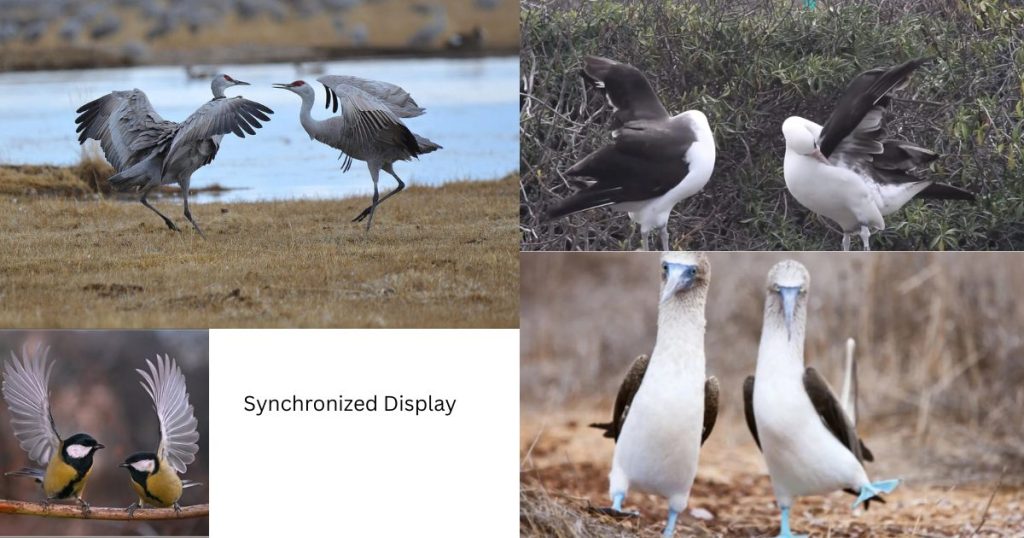
Some of the most amazing bird courtship displays fall in this category. These displays tend to be in long-lived species that pair for life, where males and females look similar. They help the pair form and bond. And let other birds know their status as a couple. This may be an example where both males and females have a preference for partners that can do this mutual display, so it is emphasized in both. I split questions in science into three categories. “What” questions like, “What kinds of birds live in this marsh?” are fairly easy to answer, and you can figure out how good your answer is after the fact. “How” questions like, “How do birds navigate over long distances during migration?” are a little bit harder to answer and it takes a little bit more ingenuity to figure out how to answer the question at all. It’s harder to know if your answer is complete also, like maybe you missed one of the senses involved. Finally, the “Why” questions. These are really, really hard to answer. Different “Why” theories take decades to evaluate and percolate through the science community because it takes a lot of insight to design an experiment that tests why something happens. And it’s much harder to estimate if the answers you came up with in your models are what correspond to actual reality. And you’ll notice this entire video was discussing “Why” questions. Which means that the answers explained in this video are likely to be changed or disproven in the future. But it’s accurate to say that these are our best guesses at explaining the amazing, complicated world all around us.
I hope you learned something new about bird courtship, and maybe learned some techniques
to try yourself.
Please let me know if any of these actually work for you!